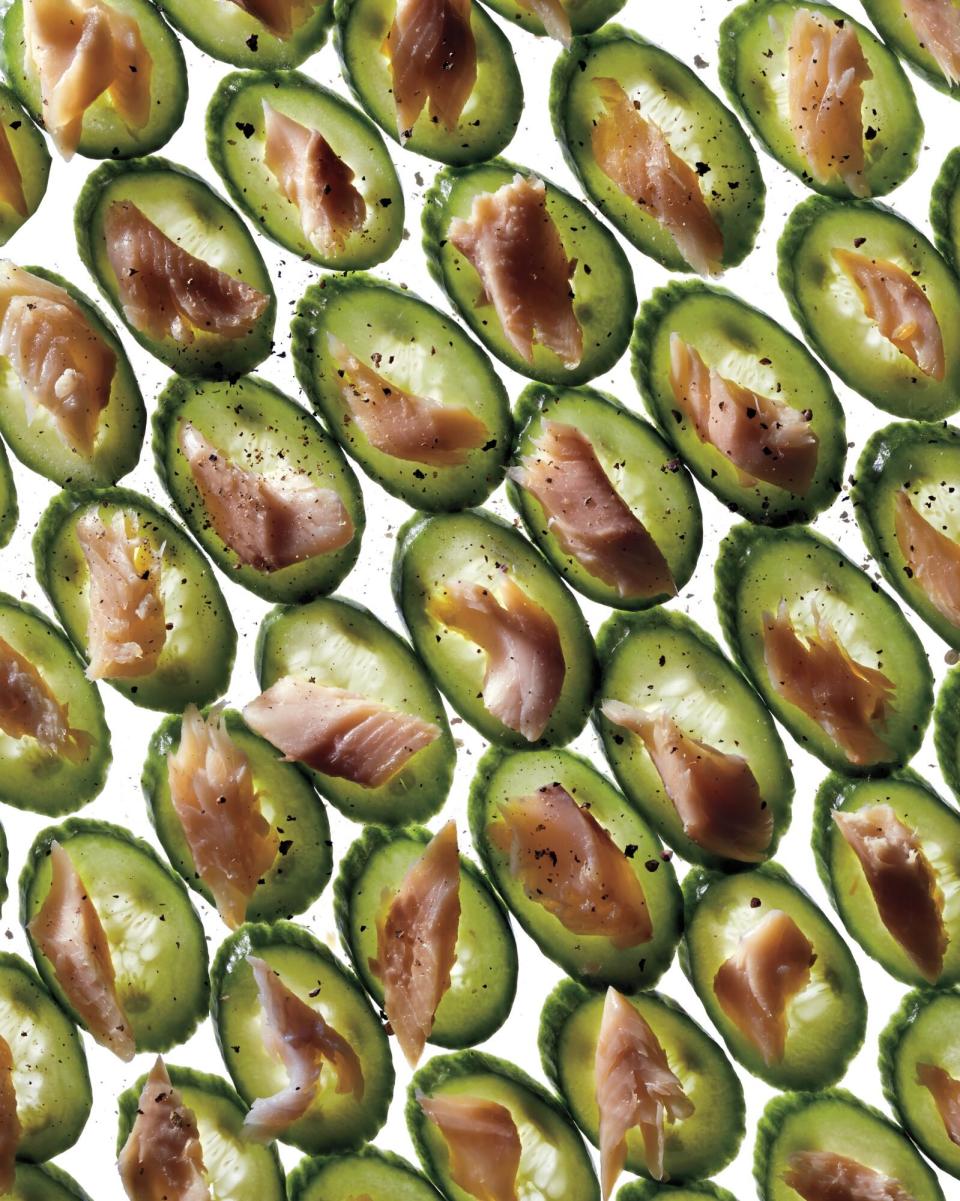What Are English Cucumbers?
As warm weather moves in, cucumbers are at their peak—sure, they're available all year long in grocery stores, but the summertime is when they're at their very best. Before you head to your local market, it's important to note that not all cucumbers are the same: If you're used to the short, wide, waxed versions (which are known as slicing cucumbers) that sometimes add a bitter taste to your salads and crudités, it's time to expand your palate. What to try next? English cucumbers, or Cucumis sativus. It's a relative of both the slicing and pickling cucumbers, but it's more mild in flavor. Here, we're breaking down how to identify, store, and enjoy English cucumbers at home.
Related: 30 Cool Cucumber Recipes You'll Want to Make All Summer Long

Bryan Gardner
What are English cucumbers?
You can recognize English cucumbers at the grocery store or farmers' market by their long, skinny shape and dark green skin, says chef Sam Davis-Allonce of Savor by Sam. Another clue: Since the skin is not as tough as that of other types of cucumbers, English cucumbers are often transported in plastic wrap. Check for ripeness by giving the cucumber a gentle press. "You should get a little give back," says Davis-Allonce. Another way to differentiate English cucumbers from other varieties is by taste. "English cucumbers are also known as seedless cucumbers because they often have little or no seeds with a sweeter flavor than slicing or pickling cucumbers," says Ryan McEnany, public relations and communications specialist for Bailey Nurseries.
How do you store them?
At home, English cucumbers won't need to be refrigerated until you cut them—just store them in the plastic wrap in a dry area. "If you have sliced it, wrap a paper towel around the sliced end and place in a Ziplock bag," recommends Davis-Allonce. "If you slice the entire thing into circle slices, place in an airtight plastic container and place a paper towel on top of them, then close the lid. They should be refrigerated once cut and placed in a container."
How should you enjoy English cucumbers?
You don't need to peel English cucumbers or remove the seeds the way you would with other varieties. The compound in cucumbers that can cause a bitter taste—and unpleasant digestive side effects—is called cucurbitacin; it's also common in other members of the gourd family, like pumpkins, squash, and melon. Burpless, or seedless, cucumbers—like English cucumbers—are bred without cucurbitacin, making them a gentler, and more versatile, alternative to other varieties.
What are some tasty recipes that make use of the type of cucumber?
It's easy to get into a habit of preparing cucumber in the same few ways—sliced with dip, layered with hummus on a simple sandwich, chopped in a green salad—but the light taste and fresh crunch brighten up a wide variety of dishes. In a Scandinavian Shrimp and Cucumber Sandwich, they contrast with shrimp, dill, hard-boiled egg, red onion, Neufchatel, and pumpernickel bread for a hearty lunch or light dinner. A classic Nicoise Salad uses cucumbers to complement rich potatoes, green beans, fennel, tuna, and black olives. For a summer brunch, an Almond Tart filled with cucumber, green pepper, heirloom tomato, and scallions—with arugula pesto and a sherry vinaigrette—is an unexpected showstopper. Noodles Tossed in a Savory Peanut-Ginger Sauce are topped with fried garlic chips and sautéed shrimp, then balanced with mild cucumbers and fresh radishes. And heart-healthy salmon, glazed with miso paste and served over rice and shiitake mushrooms, gets a cool accompaniment from paper-thin slices of English cucumber.

